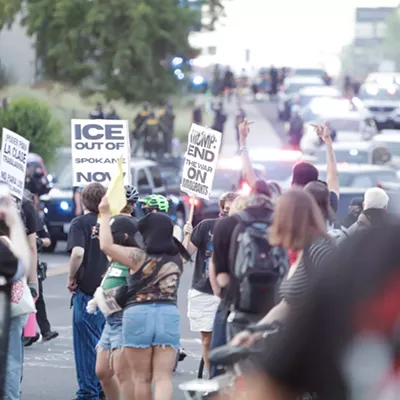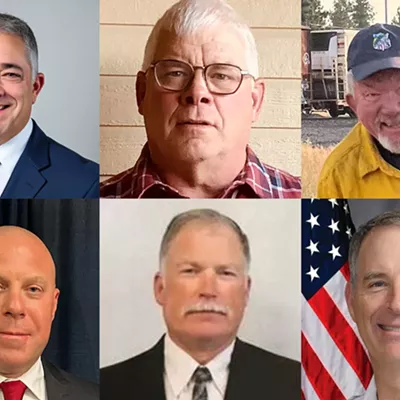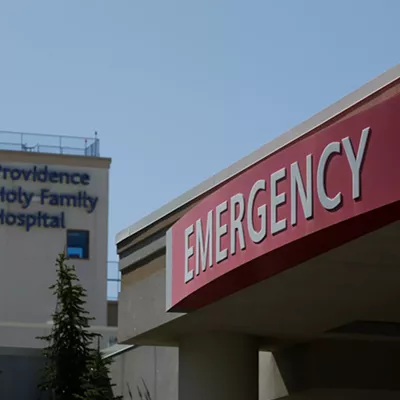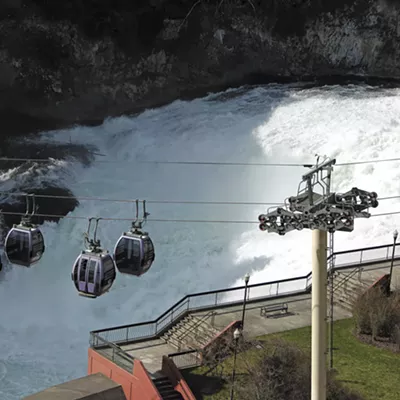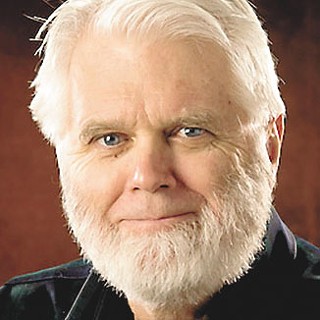At last count, before the Monroe Street Bridge was closed for repairs, more than 24,000 vehicles made their way across the aged structure each day. I recall the morning following the closure. I drove north across the Washington Street Bridge during rush hour. That morning, I left earlier than usual, expecting the worst. Instead of the worst, I found business as usual. Oh yes, a few more cars, but because the traffic signals are timed for the rush-hour volume, I experienced no delays.
Puzzled, the next morning I left at my usual time. Again, I experienced no delays. Well, I thought, maybe the south-to-north route remains OK, but what about traffic coming the other direction? To check, during another morning rush hour I drove over to Indian Trail, fully expecting a backup at the Francis light. But no, nothing to speak of. I made my way down to the Maple Street Bridge waiting to run into the buildup. Again, nothing to speak of. And the traffic across the Maple Street Bridge flowed in a typical manner.
What does this mean? Where did those 24,000 cars go? Why weren't the approaches jammed? Why weren't the bridges clogged? I can come up with two possible explanations: 1) fewer automobiles are being driven; or, 2) our system of bridges was operating below capacity. With no evidence supporting the former, the latter explanation seems more likely. Even city officials have, in a backhanded manner, conceded this point. Assistant Director of Public Works Dave Mandyke recently said, "Motorists have adjusted well to the closure of the Monroe Street Bridge."
And what are our motorists adjusting to? Here are the average weekday numbers of vehicles per day counted this month (the Hamilton Street Bridge wasn't counted because it is so far from Monroe):
Post Street Bridge
3,800 to 12,300, up 8,500 (+224 percent)
Washington Street Bridge
19,000 to 25,900, up 6,900 (+36 percent)
Maple Street Bridge
43,100 to 50,600, up 7,500 (+17 percent)
Division Street Bridge
47,900 to 53,800, up 5,900 (+12 percent)
As I mentioned, I'm familiar with the Washington Street Bridge and reaffirm that this 36 percent increase has not slowed me down, even for a minute. As expected, we see a large increase on the Post Street Bridge, but this needs to be put into perspective. The actual count prior to the closing of the Monroe Street Bridge, you see, was only about 3,800 vehicles per day, so right there we can identify much unused capacity.
But wait. Let's go back a few years. Ah ha, there they are, all these same city officials making all those dour pronouncements, warning us that if the Lincoln Street Bridge project didn't go ahead as planned, we would experience gridlock when the Monroe Street Bridge closed. Remember? But here we are, doing OK and thank you very much. Might it be that our present road and bridge system has more life in it than our asphalt devotees would have us believe?
The answer is yes. For one thing, even though in recent years we have compromised our grid system with cul-de-sacs and gated projects, most of our roads continue to run on the grid. And what we should have known all along is that this old-fashioned road configuration has an enormous capacity to absorb and diffuse traffic. Thus, until you actually have to cross that bridge, because of our grid, you have any number of ways to traverse the city. And even with limited bridge crossings, the grid gives you options.
A case in point: Following the Northridge earthquake back in 1992, many of the freeways collapsed. In the San Fernando Valley, just north of Los Angeles, both the San Diego Freeway and the Simi Valley Freeway were down. At that time, my brother was involved in a large construction project nearer to downtown. He had to find a different route. Because the San Fernando Valley roads are built on a grid, he too had no difficulty. Within days, he had actually reduced his commute time.
And this leads us to an important lesson: One-way streets (couplets, too) and limited access thoroughfares limit the usefulness of the grid system. Put simply, if you can't get to the grid, you can't make it work for you. Obviously then we should do everything we can, especially now, to improve the utility of our grid system.
This leads to a recommendation: Let's use this opportunity to experiment with a return to two-way streets in the city of Spokane wherever possible. Donovan Rypkema, an urbanist who has visited our city several times, made just this suggestion six years ago. While the Monroe Bridge closure has caused us to rely even more heavily on our old grid system, what better time for an experiment? And by making the changes temporary, only to be formalized if they work, opposition would be muted. We do know that two-way streets would help our on-street businesses throughout the city. As the jargoneers might put it, maybe we have a "win-win" situation here.
Comments? Share them at robert@inlander.com
Publication date: 02/27/03




